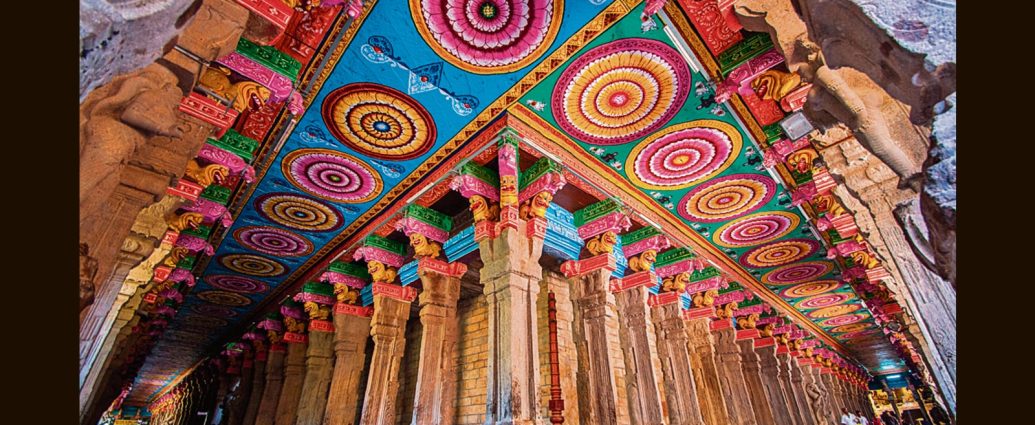Sometimes, a dose of colour is exactly what Indian heritage doesn’t need.
Kaustav Sengupta, a fashion-trend analyst and colour researcher, has been noticing a disturbing trend over the past decade. Stone temples, some more than 800 years old, are getting coats of bright, shiny paint, in misguided attempts to protect or embellish the structure.
“Look at old and more recent photos of the Meenakshi temple in Madurai and the Ramanathaswamy Temple in Rameswaram,” Sengupta says. “Those exteriors weren’t always colourful. The layers of paint have been added recently, for decoration. This wasn’t traditionally part of our religious practice. And temples are suffering as a result.”
It is, on the one hand, a blow to aesthetics. Chennai-based Sri Vaidyanatha Sthapati Associates has been repairing and restoring temples across South India for three generations. “Painting the outer surface of stone is not recommended by the shilpa shastras [ancient texts that govern arts and crafts, including temple-building],” says Ponni Selvanathan, the firm’s executive administrator. Paint obscures embellishment and workmanship. It also prevents historians and archaeologists from studying the temple’s history, identifying patrons and crafting styles of the period.
On the other hand, “most paint jobs are misguided ” Selvanathan adds. “People think they are safeguarding their temple from the elements.” In the process, they end up doing quite the opposite. Shikhars, for instance, are often coated in thick layers of enamel-based paint—bright, weather resistant, but also toxic to the stone beneath. Selvanathan and her husband, R Selvanathan, say this makes their restoration work much harder.
At the 650-year-old Sri Madhava Perumal Temple in Mylapore, Chennai, years of lime paint ended up discolouring the stone. The Selvanathans had to resort to water-blasting, which risks weakening an ancient structure. “This was carefully done, and no paint remains on the stones now,” Ponni Selvanathan says.
Farther north, in Varanasi, decades of enamel paint covering the 242-year-old Kashi Vishwanath Temple were systematically removed last year, in an ongoing restoration drive. Ad hoc salvaging projects aren’t enough, says colour researcher Sengupta. There should ideally be periodic national studies on temple maintenance and restoration guidelines for religious heritage, he adds.
Bright paint should be off-limits, but “weather protection and anti-dust coatings should be considered, particularly in view of the polluted air in many cities,” says Dikshu Kukreja, whose firm CP Kukreja Architects is overseeing the restoration and regeneration of the temple town of Omkareshwar in Madhya Pradesh.
The Selvanathans’ team continues to draw from traditional texts in their restoration work. “Without the governing factors of shilpa grammar, no old structures would have survived for so long,” Ponni Selvanathan says. At temples where they have left stone structures bare after a restoration, devotees have responded well. “Most people prefer to retain the originality of the past,” she says. “It makes us feel happy too, like a doctor who can see that their patient is recovering completely from his ailment.”
